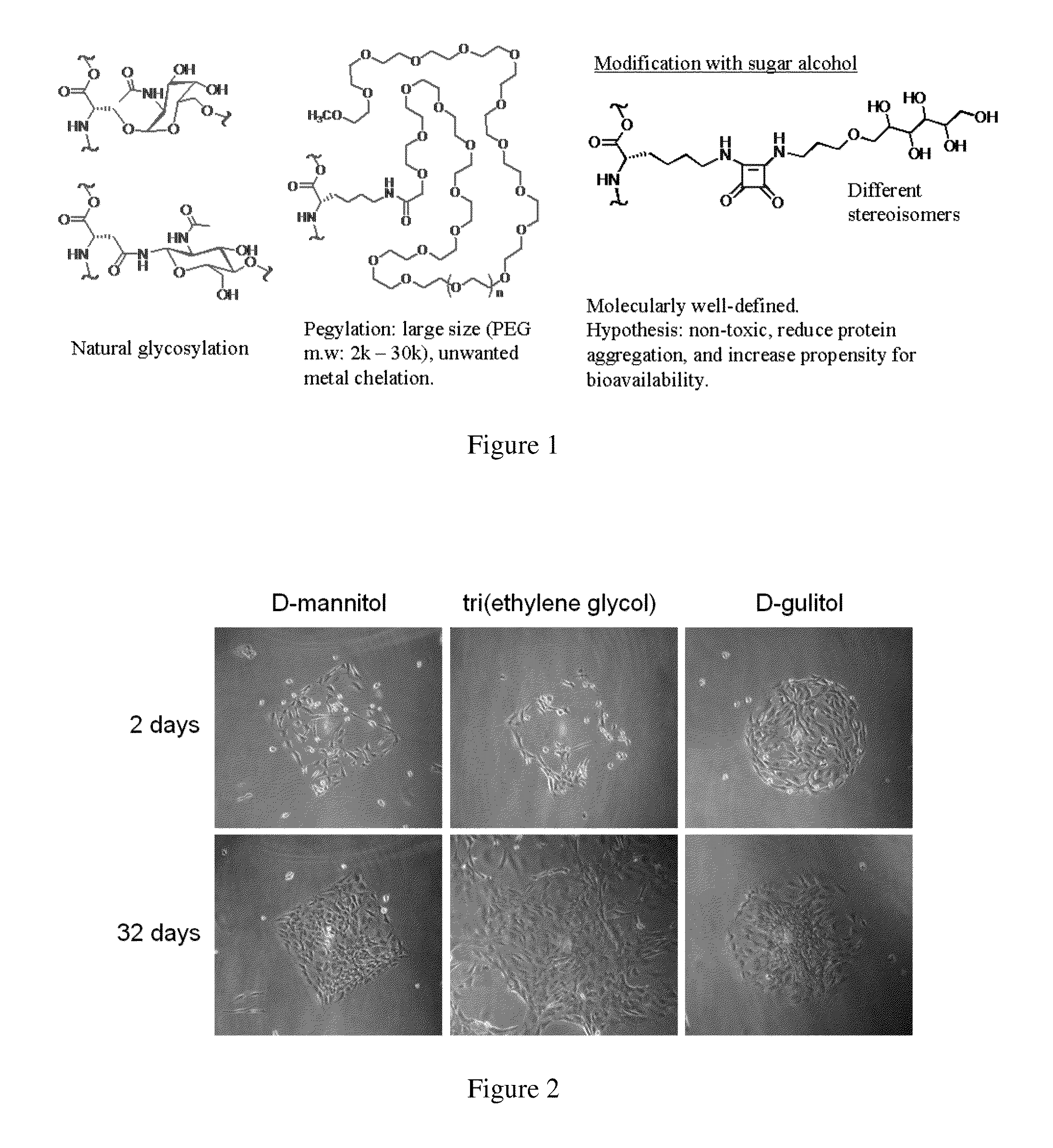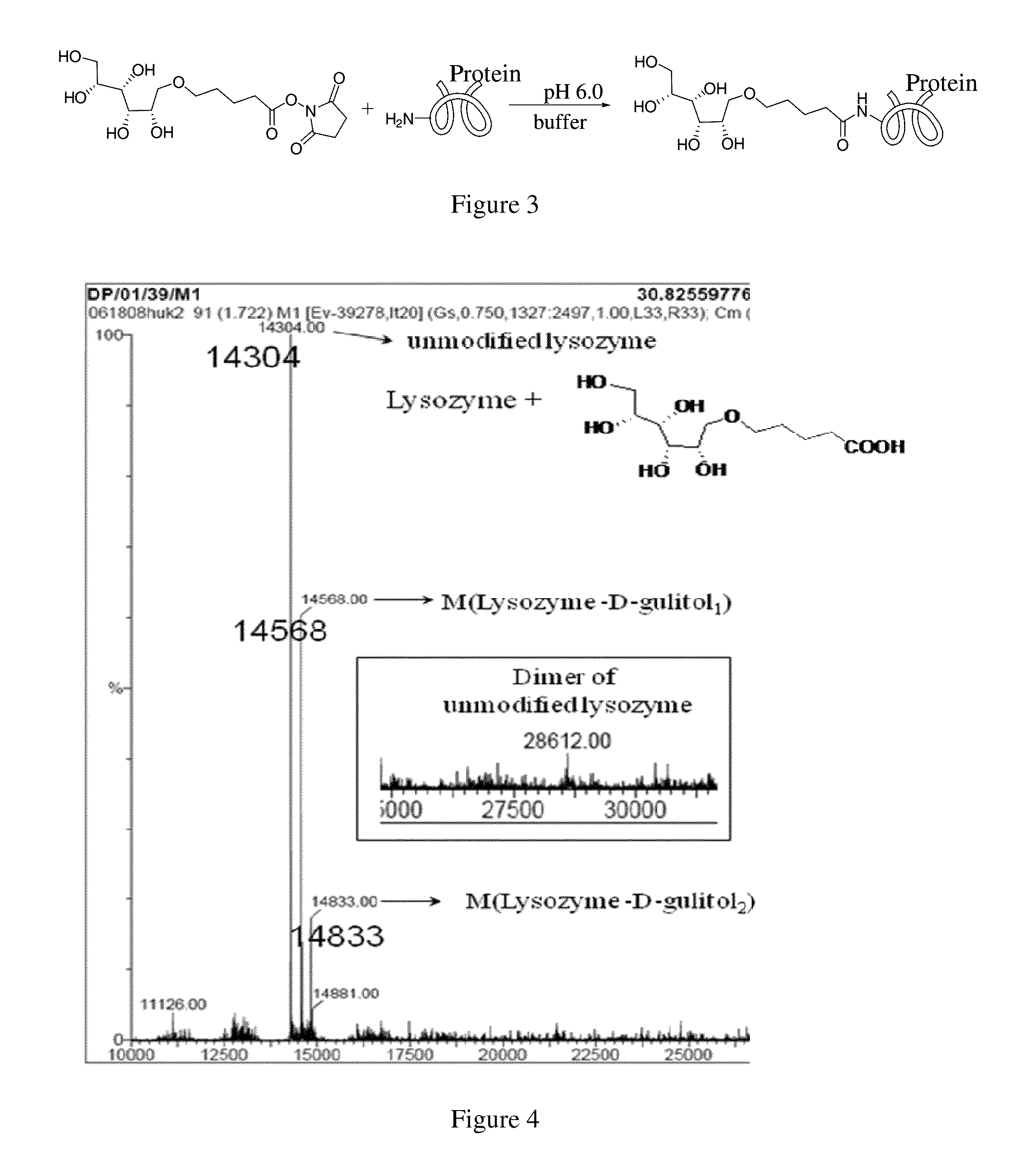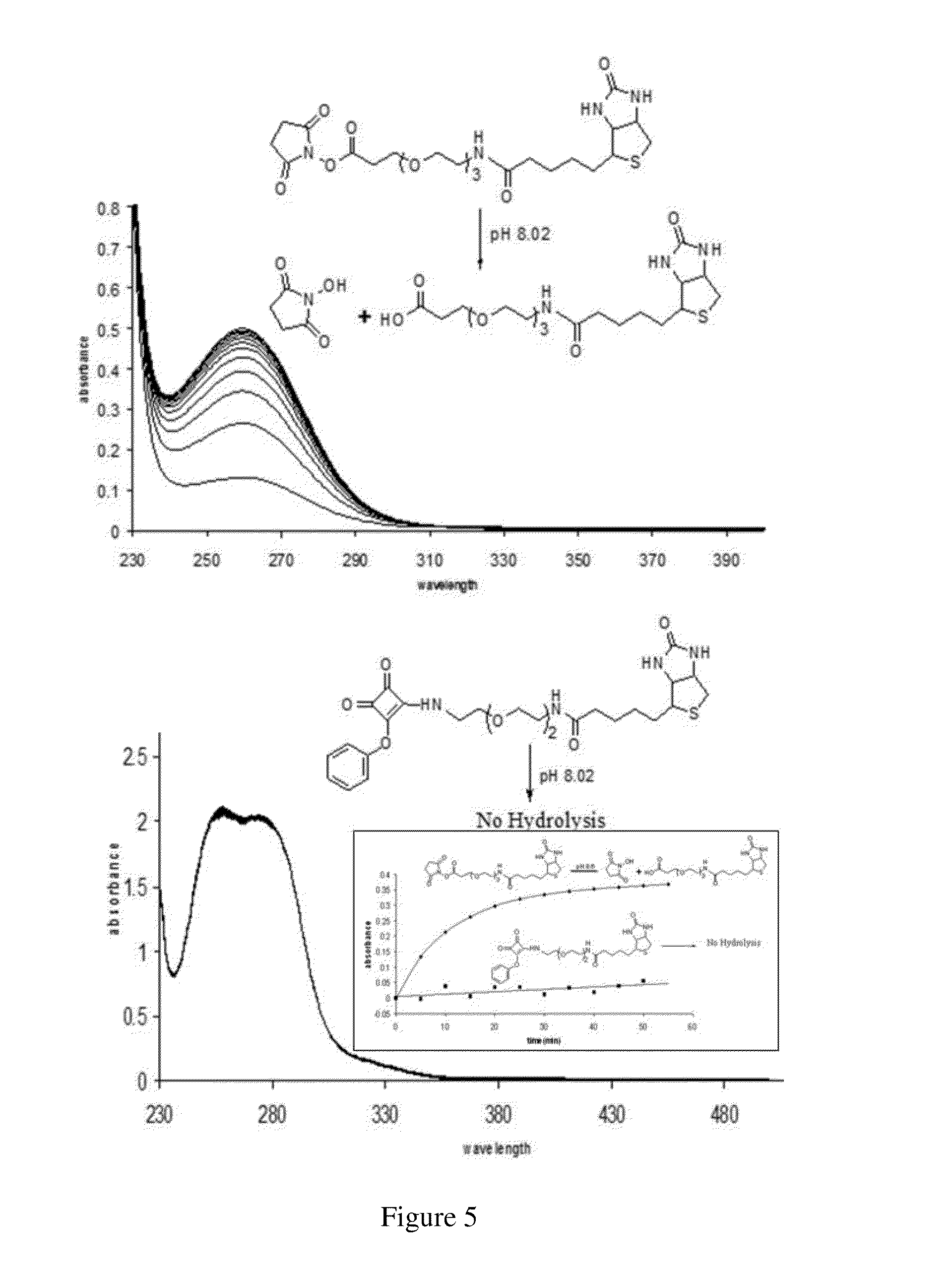Method of covalently modifying proteins with organic molecules to prevent aggregation
a protein and organic technology, applied in the field of protein aggregation prevention methods, can solve the problems of protein aggregation, serious, detrimental effects, and suffered several severe side effects, and achieve the effects of preventing protein aggregation, high yield and fast ra
- Summary
- Abstract
- Description
- Claims
- Application Information
AI Technical Summary
Benefits of technology
Problems solved by technology
Method used
Image
Examples
Embodiment Construction
[0053]In one embodiment herein, three proteins are glycosylated and / or modified with non-natural sugar alcohols. The thermo-stability and aggregation properties of the proteins are measured and evaluated. The three proteins include (a) lysozyme, (b) a monoclonal antibody specific to the pilin of Pseudomonas aeruginosa, and (c) erythropoeitin. Lysozyme is used as a model protein to test reactivity of the bioorganic reaction. Lysozyme possesses a readily assessable crystal structure, which enables the effect of modification on the crystal structure to be assessed.
[0054]The monoclonal antibody binds to the C-terminus region of pilin on P. aeruginosa and thus blocks the initial step of adhering the bacteria to the host epithelium. Functioning as an anti-adhesin, this anti-pilin monoclonal antibody counteracts the infections brought about by P. aeruginosa which includes respiratory tract infections in cancer, cystic fibrosis, and intensive care patients.
[0055]Erythropoietin (Epo) is a re...
PUM
| Property | Measurement | Unit |
|---|---|---|
| pH | aaaaa | aaaaa |
| pH | aaaaa | aaaaa |
| pH | aaaaa | aaaaa |
Abstract
Description
Claims
Application Information
 Login to View More
Login to View More - R&D
- Intellectual Property
- Life Sciences
- Materials
- Tech Scout
- Unparalleled Data Quality
- Higher Quality Content
- 60% Fewer Hallucinations
Browse by: Latest US Patents, China's latest patents, Technical Efficacy Thesaurus, Application Domain, Technology Topic, Popular Technical Reports.
© 2025 PatSnap. All rights reserved.Legal|Privacy policy|Modern Slavery Act Transparency Statement|Sitemap|About US| Contact US: help@patsnap.com



